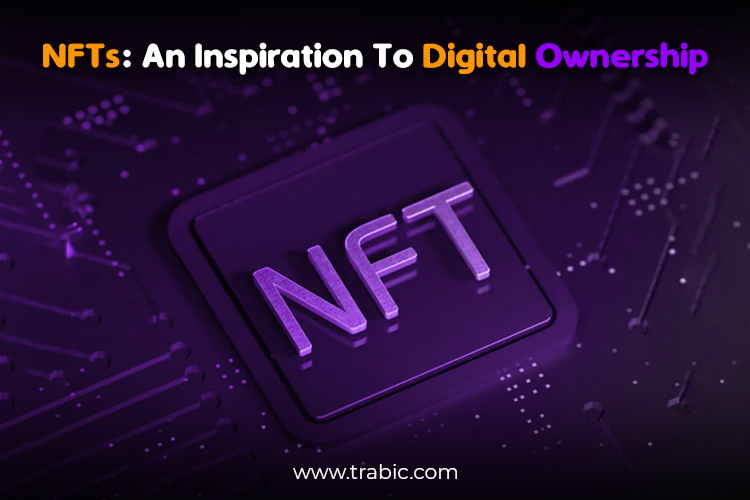In the past decade, cryptocurrencies have emerged as a groundbreaking innovation that has captivated the world’s attention. Led by the pioneering cryptocurrency Bitcoin, the digital currency revolution has transformed how we perceive and interact with money. As we venture further into the modern era, it is fascinating to witness the evolution of cryptocurrencies and their impact on various industries. In this blog, we will examine the expedition of cryptocurrencies, from the inception of Bitcoin to the diverse landscape of digital assets we see today.
The story began in 2008 when an individual or group of individuals operating under the pseudonym Satoshi Nakamoto published the whitepaper titled “Bitcoin: A Peer-to-Peer Electronic Cash System.” This groundbreaking document introduced Bitcoin, a decentralized digital currency that relied on blockchain technology. Bitcoin addressed the long-standing trust issue in financial transactions by leveraging cryptographic techniques to create a secure, transparent, and tamper-proof ledger.
Bitcoin’s launch in 2009 marked the beginning of a new era in the financial world. Initially, it garnered attention from a small community of tech enthusiasts and libertarians who were attracted to its decentralized nature and potential to disrupt traditional financial systems. As the technology matured and gained wider recognition, Bitcoin’s value soared, drawing attention from investors and the mainstream media.
Bitcoin’s success paved the way for substitute cryptocurrencies, often called “altcoins.” These digital currencies aimed to improve Bitcoin’s limitations or explore different use cases. One notable example is Ethereum, introduced in 2015 by Vitalik Buterin. Ethereum introduced smart contracts, enabling the development of decentralized applications (DApps) and ushering in a new wave of innovation in the blockchain space.
DeFi: Democratizing Finance

One of the most significant developments in cryptocurrency is the rise of decentralized finance (DeFi). DeFi refers to a system of financial applications built on blockchain networks that enable users to access traditional financial services, such as lending, borrowing, and trading, without intermediaries. DeFi has the potential to revolutionize traditional banking systems, providing greater financial inclusion, transparency, and efficiency.
NFTs: Transforming Digital Ownership

Non-Fungible Tokens (NFTs) have captured the world’s attention by revolutionizing the concept of digital ownership. NFTs are unique digital assets representing ownership of a specific item, such as artwork, collectibles, or virtual real estate. Artists, musicians, and creators leverage NFTs to monetize their work directly, bypassing traditional intermediaries. While NFTs have faced criticism for their environmental impact and speculative nature, they have undoubtedly opened new avenues for creators in the digital age.
The Future of Cryptocurrencies
As we look to the future, the evolution of cryptocurrencies shows no signs of slowing down. Technological advancements, regulatory frameworks, and changing societal attitudes will shape the path. Scalability, interoperability, and sustainability are among cryptocurrency’s key challenges to gaining widespread adoption.
- Regulatory Landscape: As cryptocurrencies have gained prominence, governments and regulatory bodies worldwide have grappled with how to regulate this new form of digital assets. The regulatory landscape has evolved, with some countries embracing cryptocurrencies and blockchain technology through favorable regulations while others have taken a more cautious approach. Striking the correct balance between fostering innovation and protecting investors will continue to be a key challenge in the coming years.
- Institutional Adoption: Traditional financial institutions and institutional investors have increasingly recognized the potential of cryptocurrencies. Established companies, such as MicroStrategy and Square, have invested significant amounts of capital in Bitcoin, signaling a shift in institutional sentiment toward digital assets. Additionally, introducing cryptocurrency exchange-traded funds (ETFs) in some jurisdictions has made it easier for institutional investors to gain exposure to cryptocurrencies.
- Central Bank Digital Currencies (CBDCs): Central banks worldwide have started exploring the concept of CBDCs. Unlike decentralized cryptocurrencies, CBDCs are issued and regulated by central banks, aiming to digitize traditional fiat currencies. CBDCs have the potential to streamline payment systems, enhance financial inclusion, and provide governments with more control over monetary policy. The development and implementation of CBDCs will significantly impact the future of digital currencies.
- Improved User Experience and Accessibility: In the early days of cryptocurrencies, the user experience was often complex and daunting for newcomers. However, significant strides have been made to improve the accessibility and user-friendliness of cryptocurrency platforms and wallets. The development of intuitive interfaces and simplified onboarding processes has opened the doors to a wider audience, making it easier for individuals to participate in the cryptocurrency ecosystem.
- Cross-Border Payments and Remittances: Cryptocurrencies can revolutionize cross-border payments and remittances. Traditional methods are often costly, time-consuming, and subject to various intermediaries. Cryptocurrencies can enable fast and low-cost international transactions, particularly for individuals in underbanked or financially underserved regions. Companies specializing in cross-border payments, like Ripple, are leveraging blockchain technology to facilitate faster and more efficient remittances.
- Privacy and Security Enhancements: Privacy and security have been ongoing concerns within the cryptocurrency space. While blockchain technology provides transparency, it also presents challenges in terms of maintaining user privacy. However, advancements in privacy-focused cryptocurrencies, such as Monero and Zcash, have addressed these concerns by implementing stronger privacy protocols. Additionally, developments in secure custody solutions and multi-factor authentication have improved the overall security of cryptocurrency holdings.
Cryptocurrency and Mainstream Acceptance
Cryptocurrencies’ increasing adoption and maturation have led to their integration into various industries. Major companies and institutions now recognize the potential of cryptocurrencies and blockchain technology. For instance, PayPal and Square have incorporated cryptocurrency transactions into their platforms, and Tesla, a leading electric car manufacturer, began accepting Bitcoin as a form of payment (although they later suspended this service). Additionally, governments and central banks worldwide are exploring the idea of CBDCs (central bank digital currencies), which could transform the traditional financial landscape.
The evolution of cryptocurrencies in the modern era has been driven by technological advancements, shifting regulatory landscapes, increased institutional participation, and a growing demand for financial innovation. As we move forward, the continued development of infrastructure, addressing scalability and sustainability challenges, and navigating regulatory frameworks will be crucial in shaping the future of cryptocurrencies and their impact on various industries.
As the first and most prominent cryptocurrency, Bitcoin has witnessed several notable innovations. These innovations have aimed to address various challenges and enhance the functionality and utility of the Bitcoin network. Here are a few key innovations in Bitcoin:
- Segregated Witness (SegWit): SegWit was implemented in August 2017 to solve Bitcoin’s scalability issue. It separated transaction signature data (witness data) from the transaction block, including more transactions. This upgrade increased the Bitcoin network’s transaction capacity and paved the way for innovations like the Lightning Network.
- Lightning Network: It is a layer-two explication built on the Bitcoin blockchain. It aims to enable faster and cheaper transactions by creating user payment channels. By conducting transactions off-chain and settling them on the Bitcoin blockchain periodically, the Lightning Network significantly reduces transaction fees and enhances scalability. It offers near-instantaneous transactions and has the potential to handle a high volume of micropayments.
- Schnorr Signatures: Schnorr Signatures is an upcoming improvement to Bitcoin’s cryptographic signature scheme. It enables multiple signatures to be aggregated into a single signature, reducing the size of transaction data and improving privacy. Additionally, Schnorr Signatures have the potential to enhance the security and efficiency of multi-signature transactions, making them more cost-effective and easier to implement.
- Taproot: Taproot is a proposed upgrade to Bitcoin’s scripting capabilities, focusing on improving privacy, security, and smart contract functionality. Taproot introduces a new signature scheme called Schnorr/Taproot, which allows complex smart contracts to appear as simple transactions on the blockchain. This upgrade enhances privacy by making it more difficult to distinguish between different types of transactions, reducing the traceability of funds.
- Atomic Swaps: Atomic swaps are a technology that enables the trustless exchange of different cryptocurrencies directly between parties without the need for intermediaries or centralized exchanges. This innovation allows users to seamlessly swap Bitcoin for other cryptocurrencies, fostering interoperability and eliminating counterparty risk. Atomic swaps contribute to the decentralization and efficiency of cryptocurrency trading.
- Sidechains and Drivechains: Sidechains and drivechains are concepts that propose extending the functionality of the Bitcoin blockchain by creating parallel chains or sidechains. These chains can be used to experiment with new features, implement scaling solutions, or test alternative consensus mechanisms. Sidechains and drive chains aim to provide more flexibility and enable innovation while maintaining a connection to the security and permanence of the Bitcoin network.
- CoinJoin and Privacy Enhancements: CoinJoin is a privacy-enhancing technique allowing multiple Bitcoin users to combine their transactions into one transaction. This method makes it difficult to trace the flow of funds, enhancing privacy and fungibility. Several implementations, such as Wasabi Wallet and JoinMarket, utilize CoinJoin to improve the privacy of Bitcoin transactions.
- Hardware Wallets: These are physical devices that securely store private keys offline. They provide an extra layer of security by keeping private keys away from potential online threats. Hardware wallets offer a user-friendly and robust solution for individuals to store and manage their Bitcoin holdings securely.
- Multi-Signature (Multi-sig) Wallets: Multi-sig wallets require multiple private keys to authorize a transaction. This feature enhances security by reducing the risk of a single point of failure. Multi-sig wallets are commonly used by businesses and organizations to secure their Bitcoin funds and prevent unauthorized access.
- Payment Processors and Merchant Adoption: Payment processors, such as BitPay and CoinGate, have significantly facilitated Bitcoin adoption among merchants. These services enable businesses to accept Bitcoin payments and seamlessly convert them into fiat currencies, reducing the barriers to entry and providing a convenient payment option for Bitcoin users.
- Improvement Proposals (BIPs): Bitcoin Improvement Proposals are formal documents submitted by the Bitcoin community to suggest changes and improvements to the Bitcoin protocol. BIPs enable open discussion and collaboration, fostering innovation and consensus within the Bitcoin ecosystem. Notable BIPs, such as BIP32 (Hierarchical Deterministic Wallets) and BIP39 (Mnemonic Code for Generating Deterministic Keys), have contributed to the usability and security of Bitcoin.
- Schnorr Taproot Soft Fork: The Schnorr Taproot soft fork proposal combines the benefits of Schnorr signatures and Taproot technology (mentioned earlier). It will bring efficiency, privacy, and flexibility to Bitcoin transactions if implemented. This upgrade has the potential to enhance the overall usability and privacy features of Bitcoin.
- CoinSwap and Atomic Multi-Path Payments over Lightning: CoinSwap is a technique that allows users to exchange one cryptocurrency for another without relying on centralized exchanges. It enhances privacy and reduces the risk of exposing user information during transactions. Atomic Multi-Path Payments over Lightning (AMP) is a Lightning Network improvement that enables splitting a large transaction into smaller parts for enhanced scalability and routing flexibility.
- Mining Innovations: In addition to protocol-level innovations, there have been advancements in the field of Bitcoin mining. This includes developing more efficient mining hardware (ASICs), mining pool coordination protocols, and exploring alternative consensus mechanisms like Proof-of-Stake (PoS) for energy efficiency.
These innovations represent the ongoing efforts to improve various aspects of Bitcoin, including privacy, security, scalability, usability, and merchant adoption. As the Bitcoin network evolves, developers and the community continue to explore and implement new technologies to enhance the functionality and value proposition of the world’s first cryptocurrency.
These innovations highlight the ongoing efforts to improve Bitcoin’s scalability, privacy, security, and functionality. They address some challenges associated with the original Bitcoin protocol and enable the network to adapt to evolving needs and use cases. As the Bitcoin ecosystem continues to evolve, we will likely see further innovations that push the boundaries of what is possible with this pioneering cryptocurrency.
Conclusion
The evolution of cryptocurrencies from the introduction of Bitcoin to the diverse landscape we see today has been remarkable. Bitcoin’s creation sparked a revolution in finance and technology, paving the way for many digital assets and innovative applications. As the cryptocurrency ecosystem continues to evolve, we can expect further advancements that will shape the future of money and beyond.
The integration of cryptocurrencies into mainstream society has been a significant milestone. With major companies accepting digital currencies as payment and financial institutions exploring blockchain-based solutions, the line between traditional finance and cryptocurrencies is becoming increasingly blurred. This acceptance and adoption signal a shift in the perception of cryptocurrencies as a viable alternative to traditional monetary systems.
DeFi (Decentralized finance) has emerged as a powerful force within cryptocurrency, offering various financial services without intermediaries. DeFi platforms enable users to lend, borrow, trade, and earn interest on their cryptocurrency holdings, all while maintaining control of their funds. By removing the need for traditional financial institutions, DeFi promotes financial inclusion and empowers individuals worldwide to access previously unavailable financial services.
Another groundbreaking development in cryptocurrency is the rise of non-fungible tokens (NFTs). NFTs have revolutionized the concept of digital ownership by enabling unique assets to be bought, sold, and traded on blockchain networks. This has created new opportunities for artists, musicians, and content creators to monetize their work, fostering a more direct and transparent relationship with their audience. While NFTs have faced criticism for their environmental impact and speculative nature, they undeniably represent a paradigm shift in how we perceive and value digital assets.
Stability, interoperability, and sustainability will be critical factors in the future of cryptocurrencies. Scalability alludes to the capability of blockchain networks to handle many transactions efficiently. As cryptocurrencies gain wider adoption, scalability becomes crucial to ensure smooth and seamless user experiences. Interoperability, on the other hand, focuses on enabling various blockchain networks to communicate and interact with one another. This interoperability will facilitate the development of interconnected ecosystems, fostering innovation and collaboration among various projects.
Sustainability is an increasingly important consideration in the cryptocurrency space. The environmental impact of cryptocurrency mining, particularly for proof-of-work networks like Bitcoin, has raised concerns about energy consumption and carbon emissions. As the industry evolves, there is a growing emphasis on finding more sustainable alternatives, such as transitioning to more energy-efficient consensus mechanisms like proof-of-stake.
In conclusion, the evolution of cryptocurrencies from the inception of Bitcoin to the diverse landscape we witness today has been transformative. Bitcoin opened the floodgates, inspiring the development of alternative cryptocurrencies and pushing the boundaries of what is possible with blockchain technology.
As cryptocurrencies continue to gain mainstream acceptance and new applications like DeFi and NFTs reshape the financial and creative industries, the future of cryptocurrencies holds immense potential. With ongoing advancements in technology, regulation, and societal acceptance, we are witnessing a revolution that will shape how we perceive and interact with money in the modern era and beyond.
In conclusion, the evolution of Bitcoin and the broader cryptocurrency ecosystem has been a remarkable journey that has reshaped the modern era of finance and technology. What began as the creation of Bitcoin by Satoshi Nakamoto has blossomed into a vibrant and dynamic industry fueled by constant innovation and driven by a passionate community.
Bitcoin laid the foundation for decentralized digital currencies, introducing the revolutionary concept of blockchain technology and a transparent, tamper-proof ledger. From there, the cryptocurrency landscape expanded, with the emergence of alternative cryptocurrencies (altcoins) addressing different use cases and exploring unique technological advancements.
Integrating cryptocurrencies into mainstream society has been a significant milestone, with major companies, financial institutions, and governments recognizing their potential and exploring their applications. The advent of decentralized finance (DeFi) has democratized financial services, enabling individuals to access lending, borrowing, and trading opportunities without intermediaries.
Additionally, the rise of non-fungible tokens (NFTs) has transformed the concept of digital ownership, empowering artists, musicians, and creators to monetize their work directly and forging new paths in the digital age.
As the cryptocurrency ecosystem evolves, it faces scalability, interoperability, and sustainability challenges. However, technological advancements, regulatory frameworks, and changing societal attitudes continue to drive progress and innovation.
The future of cryptocurrencies holds immense potential, with ongoing developments in scalability solutions, privacy enhancements, smart contract capabilities, and cross-chain interoperability. These innovations will shape how we transact, invest, and interact with financial systems in the future.
While the journey of cryptocurrencies is still unfolding, one thing remains clear: they have forever altered the way we think about and interact with money. The impact of cryptocurrencies extends far beyond their monetary value, as they challenge traditional systems, foster financial inclusion, and empower individuals to take control of their financial future.
As we embrace this new era, it is crucial to navigate the landscape cautiously, recognizing both the opportunities and the risks associated with cryptocurrencies. By fostering collaboration, embracing technological advancements, and promoting responsible adoption, we can shape a future where cryptocurrencies coexist with traditional financial systems, driving innovation and economic empowerment.
The evolution of cryptocurrencies is an ongoing story, and it will be fascinating to witness the developments as this revolutionary technology continues to reshape our world.

